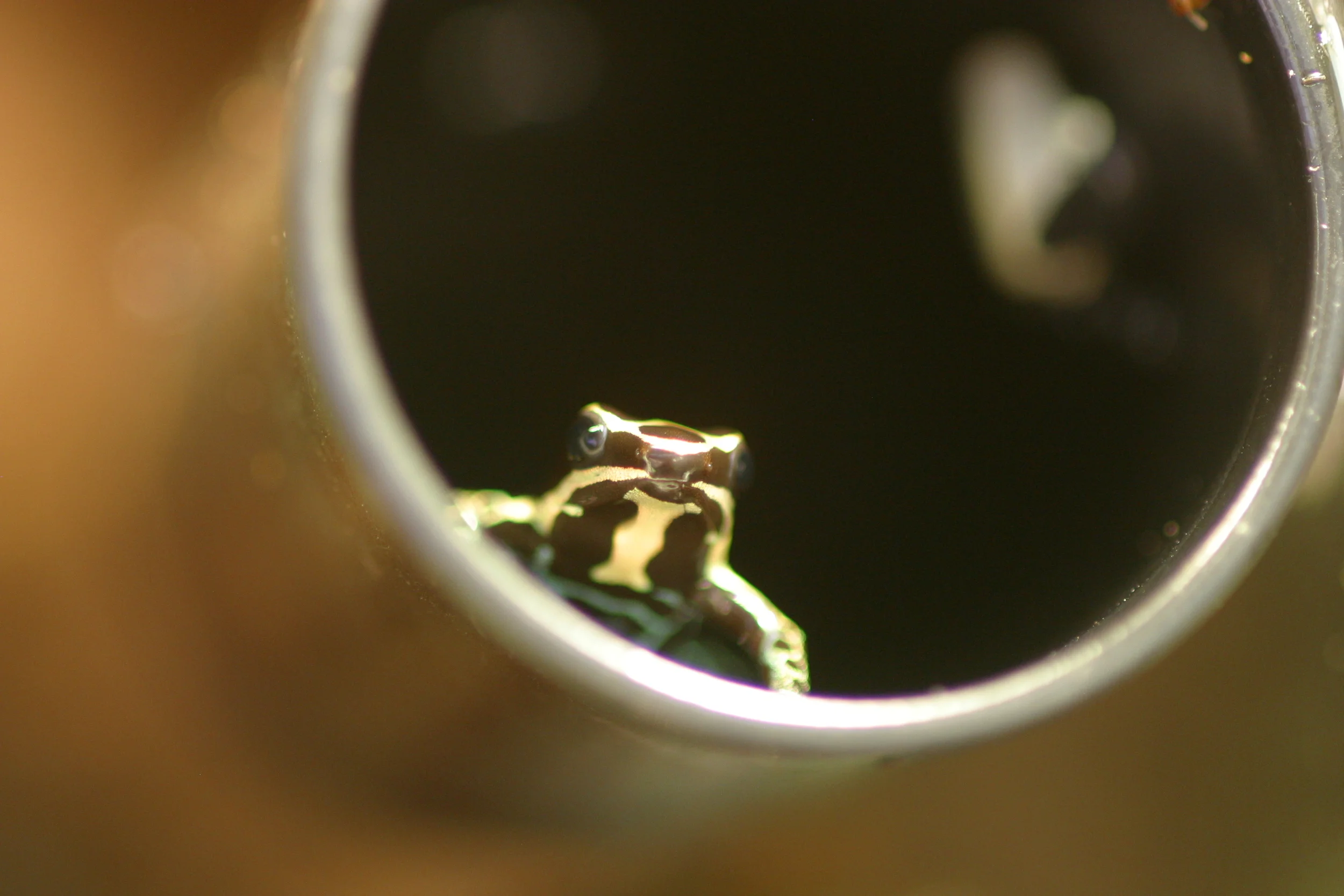Ranitomeya amazonica
The species that was, wasn't and is again. Originally used to describe the red Dendrobates ventrimaculatus from the area around Iquitos, Peru, the species name wasn't universally accepted in science. Then, after the genus Ranitomeya was reworked after genetic studies were completed, amazonica had a place again. The species is now represented by the former yellow ventrimaculata from French Guyana as well as the original red frogs from Iquitos. Care of variabilis is the same as amazonica.
Clutches of 4-10 eggs are laid every week to once every three weeks in film canisters tilted at about a 45 degree angle so that they hold a bit of water. Eggs are laid below the water line and having clean water in the film canister seems to be a prerequisite to the frogs laying eggs. From time to time, all the frogs in the enclosure will end up in the film canister when breeding occurs.
The male will transport the tadpoles to other bodies of water in the enclosure and the female may lay nutritive eggs for the tadpoles.
The adults will sometimes lay viable clutches of eggs in the water with a tadpole, but I am unsure if this is just an artifact of captive life. Tadpoles are carnivorous and may be cannibalistic so keeping them individually is a good idea.
Care: Easy, a good first thumbnail, sometimes shy
Groups: Yes, even mix of sexes
Breeding: Easy, film canisters tilted to 45 degrees to hold water
Tadpoles: Parents show indirect care, will breed in canisters that have tadpoles in them, recommend pulling after deposition
Froglets: Small, springtails are a help
Tips: For frogs that don't readily use film canisters, try a shallow dish with water and philodendron it it, keep water clean

Iquitos - Understory
Frogs brought into the US by Understory Enterprises. Variable in color from red to orange with blue netted legs. Very similar to what was called Red Amazonicus from European and direct importations.

Iquitos - Understory

Iquitos - Understory

Red Amazonica - Old Line
These frogs are very similar in coloration - especially throat pattern to the imports by Understory Enterprises. The parents of these frogs were acquired from Todd Kelley in the late nineties.

Gold - Peru
These frogs first entered the US via Chuck Powell in the 1990's. In general, they resemble a typical R. amazonica with a well defined 'Y' pattern and thick colored stripes. This frog is not as bold as the amazonica from Iquitos but also not as shy as some fantastica.

Gold - Peru

Gold - Peru
Notice the stripe on the throat. This marking is particular to this species - from what I've seen.

Gold - Peru

